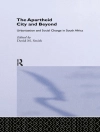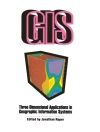Geocomputation is the use of software and computing power to solve complex spatial problems. It is gaining increasing importance in the era of the ‘big data’ revolution, of ‘smart cities’, of crowdsourced data, and of associated applications for viewing and managing data geographically – like Google Maps. This student focused book:
- Provides a selection of practical examples of geocomputational techniques and ‘hot topics’ written by world leading practitioners.
- Integrates supporting materials in each chapter, such as code and data, enabling readers to work through the examples themselves.
Chapters provide highly applied and practical discussions of:
- Visualisation and exploratory spatial data analysis
- Space time modelling
- Spatial algorithms
- Spatial regression and statistics
- Enabling interactions through the use of neogeography
All chapters are uniform in design and each includes an introduction, case studies, conclusions – drawing together the generalities of the introduction and specific findings from the case study application – and guidance for further reading.
This accessible text has been specifically designed for those readers who are new to Geocomputation as an area of research, showing how complex real-world problems can be solved through the integration of technology, data, and geocomputational methods. This is the applied primer for Geocomputation in the social sciences.
Tabela de Conteúdo
Introduction
Describing how the world looks
Spatial Data Visualisation with R – James Cheshire and Robin Lovelace
Geographical Agents in Three Dimensions – Paul Torrens
Scale, Power Laws, and Rank Size in Spatial Analysis – Michael Batty
Exploring movements in space
Agent-Based Modeling and Geographical Information Systems – Andrew Crooks
Microsimulation Modelling for Social Scientists – Kirk Harland; and Mark Birkin
Spatio-Temporal Knowledge Discovery – Harvey Miller
Circular Statistics – David Rohde and Jonathan Corcoran
Making geographical decisions
Geodemographic Analysis – Alexandros Alexiou and Alexander Singleton
Social Area Analysis and Self Organizing Maps – Seth Spielman and David Folch
Kernel density estimation and Percent Volume Contours – Daniel Lewis
Location-Allocation Models – Melanie Tomintz, Graham Clarke and Nawaf Alfadhli
Explaining how the world works
Geographically Weighted Generalised Linear Modelling – Tomoki Nakaya
Spatial Interaction Models – Karyn Morrissey
Python Spatial Analysis Library (Py SAL): An Update And Illustration – Sergio Rey
Reproducible Research: Concepts, Techniques and Issues – Chris Brunsdon and Alex Singleton
Enabling interactions
Using Crowd-Sourced Information to Analyse Changes in the Onset of the North American Spring – Chris Brunsdon and Lex Comber
Open Source GIS software – Oliver O’Brien
Public Participation in Geocomputation to Support Spatial Decision Making – Richard Kingston
Conclusion
References
Sobre o autor
Alex Singleton is Professor of Geographic Information Science at the University of Liverpool, where he entered as a lecturer in 2010. He holds a BSc (Hons) Geography from the University of Manchester and a Ph D from University College London. To date, his research income totals around £15m, with two career highlights including the ESRC funded Consumer Data Research Centre; and the recently awarded ESRC Centre for Doctoral Training in New Forms of Data. Alex’s research is embedded within the Geographic Data Science Lab (geographicdatascience.com) and concerns various aspects of urban analytics. In particular, his work has extended a tradition of area classification within Geography where he has developed an empirically informed critique of the ways in which geodemographic methods can be refined for effective yet ethical use in public resource allocation applications.












